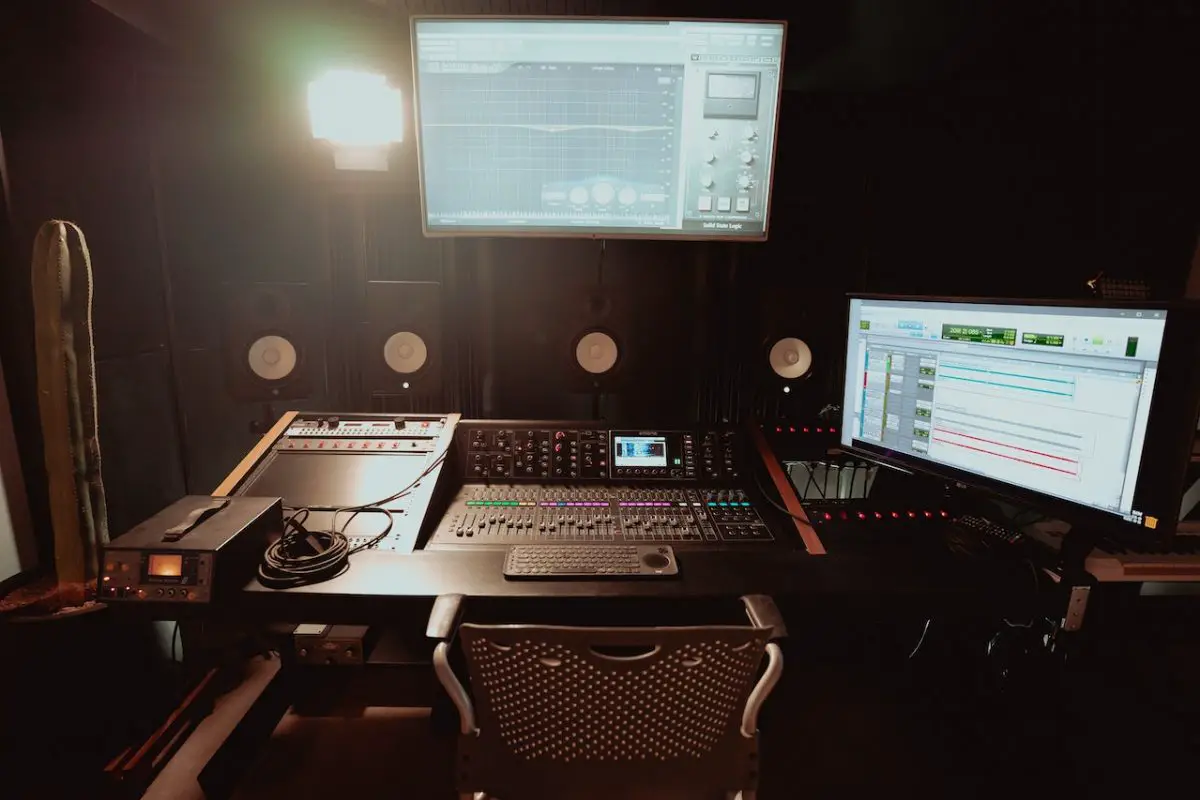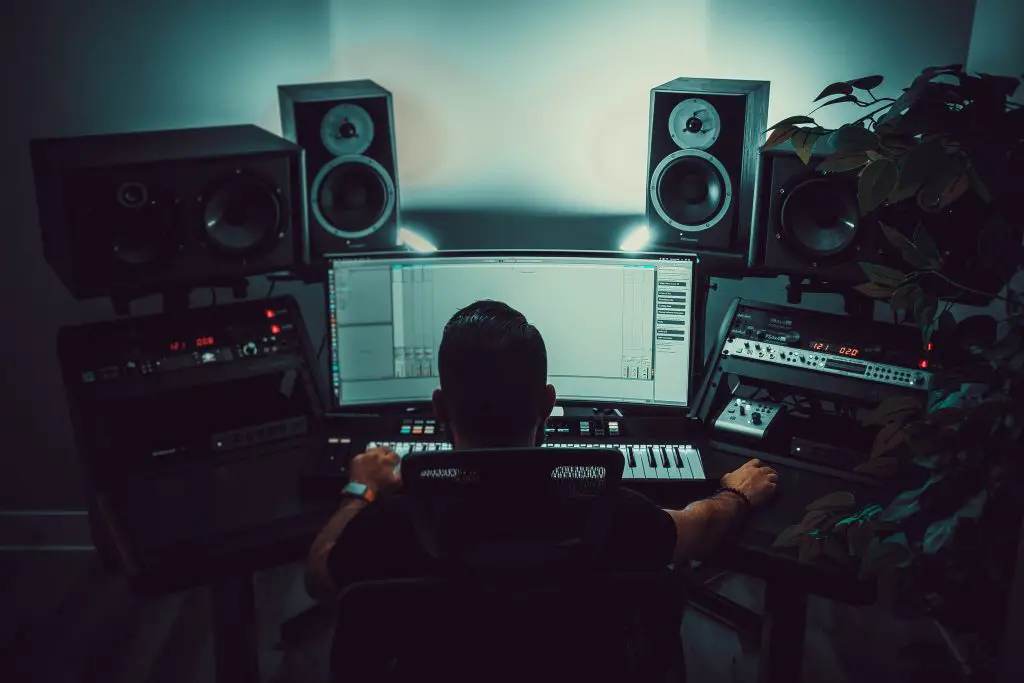As a music producer, I know all too well the importance of having a high-quality pair of studio monitors. After all, they’re the speakers that help me ensure my tracks sound their absolute best.
But one question that often comes up is: do studio monitors need to be broken in, just like a new pair of shoes? Well, let me tell you, it’s a tough nut to crack-le (sorry, I couldn’t resist the pun). In this article, we’ll take a deeper dive into the topic of breaking in studio monitors and whether or not it’s really necessary.
Do studio monitors need to be broken in? The general consensus among engineers and audio professionals is that studio monitors should be broken in before they are used in a recording studio. This is because breaking in studio monitors allows the speakers to become more flexible and better to reproduce sound accurately.
What are studio monitors?
Studio monitors are loudspeakers that are specifically designed for use in recording studios. Unlike regular speakers, which are designed to produce a more polished and pleasing sound, studio monitors are intended to provide a flat and accurate representation of the sound being recorded.

This allows audio engineers and producers to hear the music as it actually sounds, without any artificial enhancements or coloration. Studio monitors are an essential tool in any recording studio, as they help ensure that the music being recorded and mixed is as true to the original sound as possible.
AKAI Professional MPK Mini MK3

AKAI Professional MPK Mini MK3
Why do people believe in breaking in speakers?
The frequency response of speakers is said to “level out” after a run-in or break-in time because the components loosen up. It is believed that the magnet strength shifts and the speaker cones get loosened during this period. In this hypothesis, the speakers are being utilized for the first time in a whole new setting, so to speak.
Do studio monitors really need to be broken in?
We know what the producers claim, but what does the research show? Is all of this just a giant hoax that these corporations have cooked up?
…many speaker manufacturers provide instructions for “breaking in” your speakers in the product handbook.
This amazing forum post by Audio Science Review’s creator came the closest. Indeed, he demonstrates the case against illegally inserting microphones and speakers. Manufacturers either have a misunderstanding of how speakers work or are spreading a false belief about it in the name of audiophilia. Or, they may be banking on the fact that if you don’t take a like to the voice at first, you won’t want to return the item until it’s too late.
This is a really cynical take on the manufacturing industry, and it seems unlikely that so many different companies would band together to support this viewpoint. Most engineers appear to agree that this is a good idea, and many speaker manufacturers provide instructions for “breaking in” your speakers in the product handbook.
The “burn-in” or “infant death”
Another reason you might want to break in your speakers is to avoid the “burn-in. The “burn-in” or “infant death” effect refers to the phenomenon of some speakers, particularly those with powerful bass drivers, experiencing a temporary decline in performance after they are first used. This can manifest as a loss of bass response or a reduction in overall volume.
The effect is typically temporary and can be remedied by allowing the speakers to “break in” over time, during which they gradually become more flexible and better able to reproduce sound accurately. The “burn-in” or “infant death” effect is more commonly observed in studio monitors than in regular speakers, as studio monitors are designed to handle a wider range of frequencies and higher levels of volume.
How to properly break in studio monitors
To properly break in studio monitors, follow these steps:
1. Position your monitors properly
Set up your studio monitors in their intended listening position, making sure they are properly positioned and angled for optimal sound.
2. Play a variety of music
Play a variety of music through the monitors at a moderate volume, allowing the music to play for at least 12-24 hours. This will help the speakers become more flexible and better able to reproduce sound accurately.

3. Avoid loud sounds
Avoid playing extremely loud or bass-heavy music during the break-in period, as this can cause damage to the speakers and hinder their ability to break in properly.
4. Continue using the monitors
After the initial break-in period, continue to use the studio monitors regularly, but avoid exposing them to excessively loud or bass-heavy music. This will help maintain the flexibility of the speakers and ensure they continue to perform at their best.
5. Perform proper maintenance
It’s also important to properly maintain your studio monitors, including cleaning the speakers and checking for any damage or wear. This will help ensure that your studio monitors continue to perform optimally over time.
Do monitors require only a single initial break-in?
The time to break in your new studio monitors is immediately after purchase. But there’s a school of thinking that says the “loosening” effect will go after a while if you don’t use them. What do you think?
Usually, studio monitors only need to be broken in once, but if you haven’t used them in a while, the materials may have stiffened up, in which case you might try leaving them on overnight again to get the same “break-in” effect.
If you want even more tips and insights, watch this video called “FAQ Friday: Do I need to break in my studio monitors?” from the Kali Audio YouTube channel.
Frequently asked questions (FAQ)
Do you still have questions about breaking in studio monitors? Below are some of the most commonly asked questions.
How long do studio monitors take to break in?
The amount of time it takes for studio monitors to break in can vary, but it is generally recommended to play music through them for at least 12-24 hours before using them for critical listening. This allows the speakers to gradually become more flexible and better able to reproduce sound accurately.
Are studio monitors worth it in the untreated room?
Studio monitors are designed to provide a flat and accurate representation of sound, but if the room they are placed in is not acoustically treated, their performance may be compromised. In short, while studio monitors can still be useful in an acoustically untreated room, their performance will be greatly improved if the room is treated for acoustics.
Do studio headphones need to be broken in?
It is not generally necessary to break in studio headphones, as they are typically designed to be used right out of the box. Unlike studio monitors, which have large and powerful speakers that can become stiff and unyielding over time, studio headphones have smaller and more flexible drivers that do not require breaking in.
Conclusion
Breaking into studio monitors is an important step that should not be overlooked in the setup of a home recording studio. While some may dismiss the idea of breaking in studio monitors and see it as a myth, I believe it is a necessary process that can greatly improve the performance of your studio monitors.
So, if you want your studio monitors to sound their absolute best, be sure to take the time to break them in properly. Just remember, it’s a process that takes time – you can’t expect your studio monitors to hit all the right notes right out of the box (pun intended).
So, do you believe that monitors need to be broken in? And did I cover everything you wanted to know? Let me know in the comments section below (I read and reply to every comment). If you found this article helpful, share it with a friend, and check out my full blog for more tips and tricks on music production. Thanks for reading, and never stop making music.
Key takeaways
This article covered whether studio monitors really need to be broken in. Here are some key takeaways:
- Studio monitors are loudspeakers that are specifically designed for use in recording studios.
- The frequency response of speakers is said to “level out” after a run-in or break-in time because the components loosen up.
- In a studio, monitors are crucial because the sounds they create have an impact on the recording, editing, mixing, and other processes.
- For further information on how to operate the device safely and how loud it may become, it’s best to consult the manual. Always be sure to take precautions.















